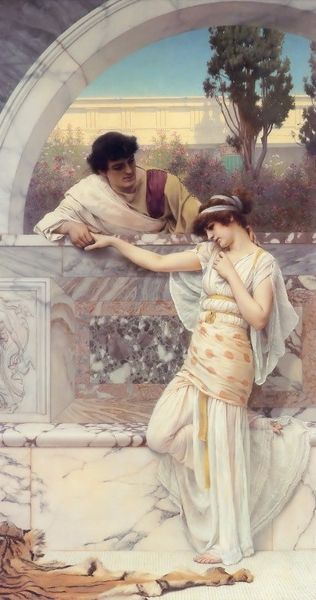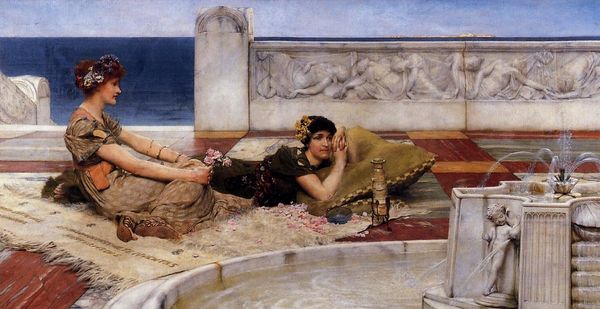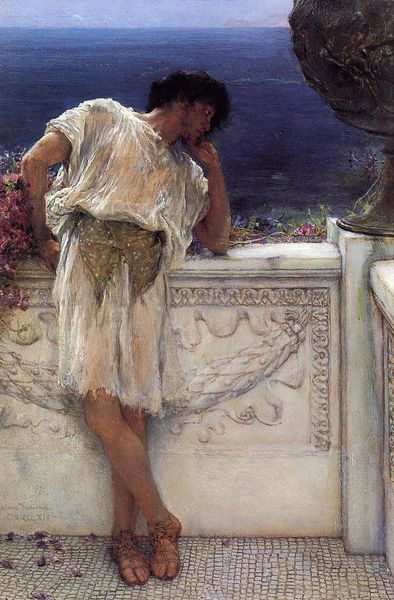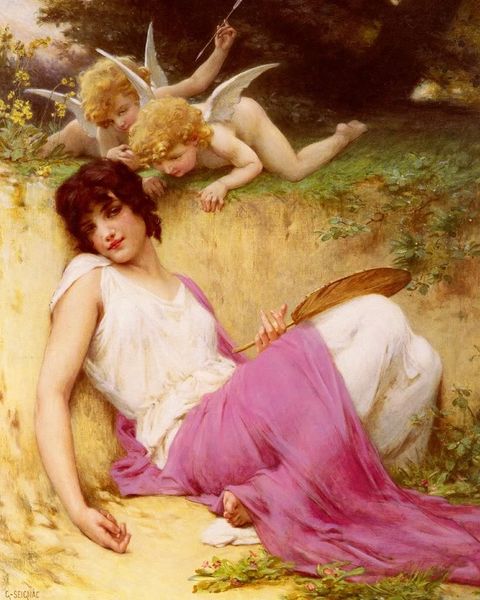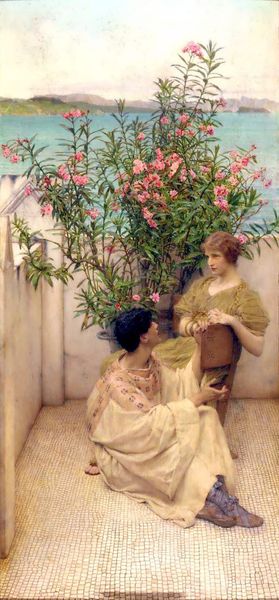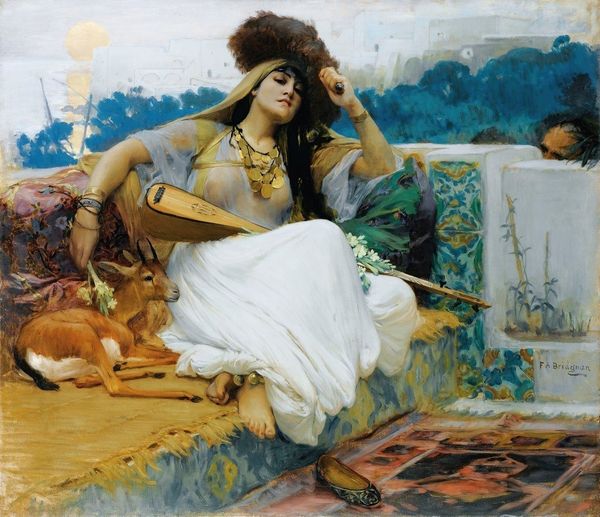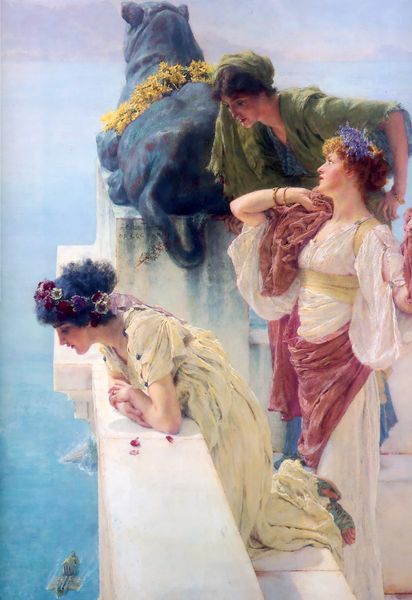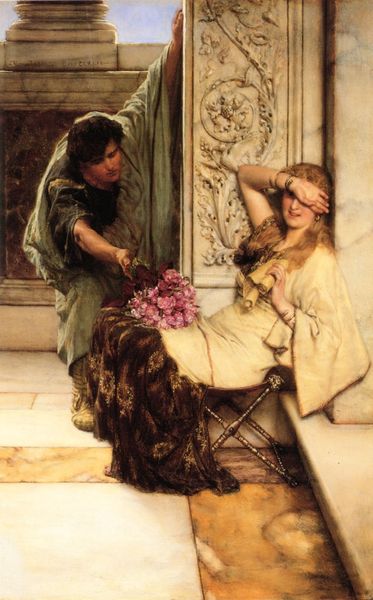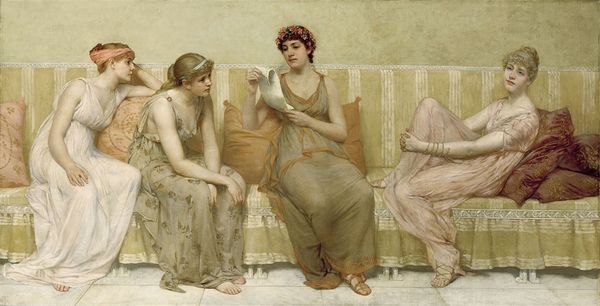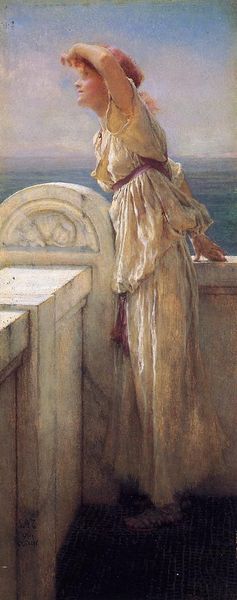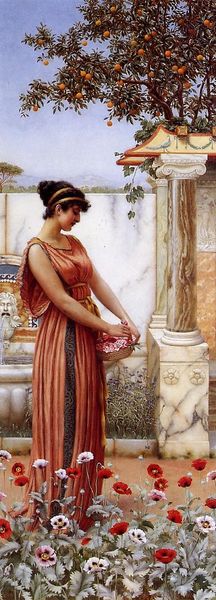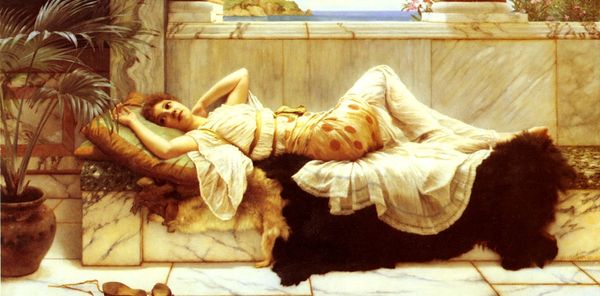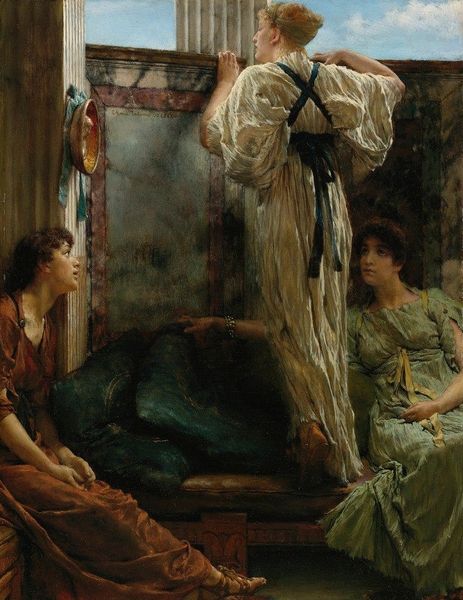
painting, watercolor
#
portrait
#
gouache
#
water colours
#
painting
#
impressionism
#
watercolor
#
intimism
#
genre-painting
#
academic-art
#
watercolor
Dimensions: 38.6 x 51.5 cm
Copyright: Public domain
Editor: So, this is Lawrence Alma-Tadema's "Favourite Poet," painted in 1888. It's watercolor on paper, and it strikes me as incredibly intimate and almost dreamlike with the warm light bathing the scene. What do you see in this piece, especially regarding its social context? Curator: I'm drawn to how Alma-Tadema, a master of Academic art, meticulously constructs this image of leisure. But that very construction is what's interesting. Think about the context: late 19th-century Britain, obsessed with classical antiquity. He’s not just depicting Roman life; he’s offering a vision of refined taste and domesticity to a specific Victorian audience. Editor: So, it's less about historical accuracy and more about… projecting Victorian values? Curator: Exactly. Consider the women. One is actively reading, a sign of intellectual pursuit deemed appropriate, even fashionable, for women of a certain class. The other reclines, embodying a passive ideal of beauty. It reinforces specific roles while showcasing wealth and education. The presence of the scroll itself signifies access to knowledge and power – but for whom, and at what cost? It's important to remember the colonial structures supporting this leisure. How does that make you see the piece? Editor: That shifts everything. It's no longer just a pretty picture; it's a statement about social stratification, about who gets to enjoy beauty and knowledge. Curator: And who is excluded. Alma-Tadema's skill served to naturalize a particular social order, making it appear timeless and beautiful, obscuring the underlying power dynamics. Editor: I’ll never look at another "genre-painting" quite the same way! This has highlighted how artworks are cultural products that reinforce beliefs and power structures. Curator: Indeed. By unpacking the context, we’ve moved beyond admiring technical skill to critically engaging with the work’s ideological implications. It shows how deeply intertwined art is with the socio-political fabric.
Comments
No comments
Be the first to comment and join the conversation on the ultimate creative platform.
